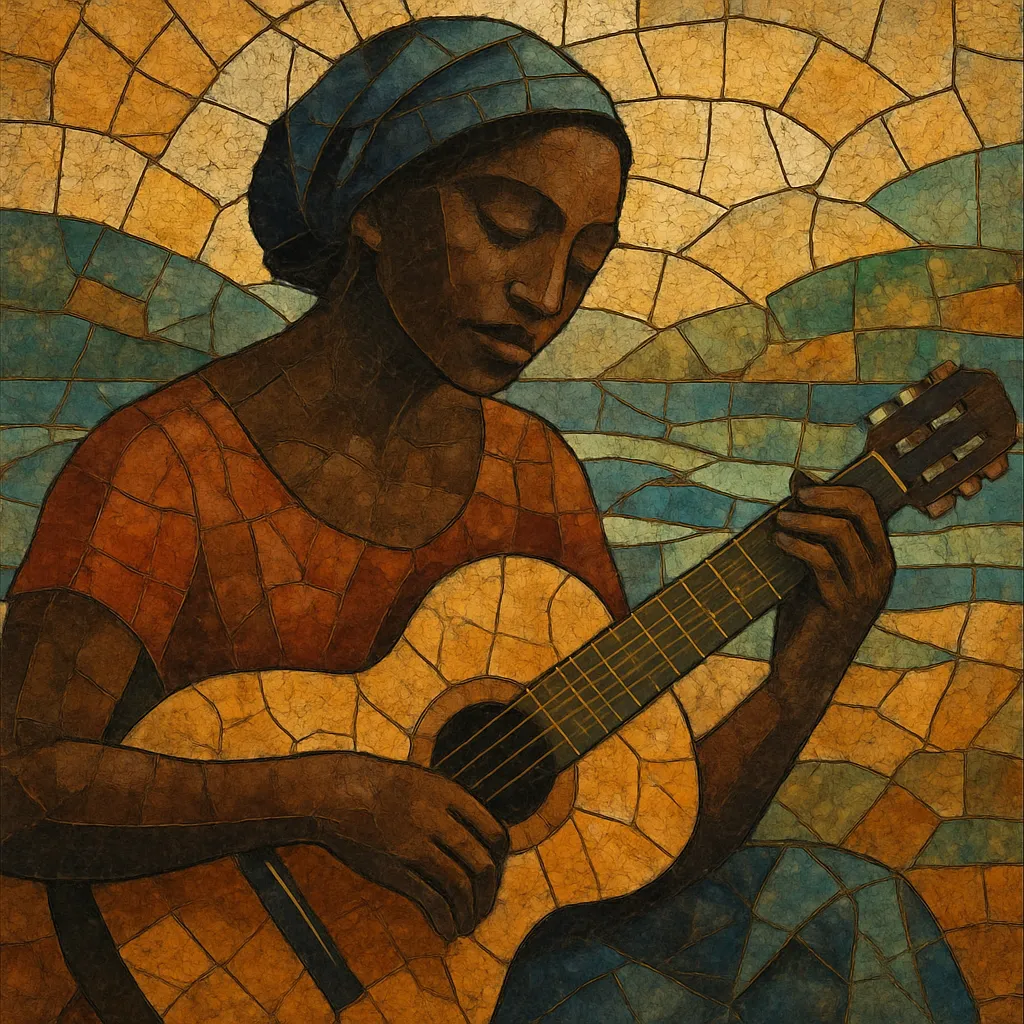Morna is the emblematic song genre of Cape Verde, often described as the archipelago’s equivalent of the blues. It is typically slow to moderate in tempo, performed with a lyrical, intimate vocal delivery, and rich, poetic texts in Cape Verdean Creole that dwell on sodade (longing), love, migration, the sea, and island life.
Musically, morna favors minor keys and bittersweet harmonies, with guitar-led accompaniment that interweaves arpeggios and gentle counter-melodies. Its rhythmic feel can reflect a subtle habanera lilt or a waltz-like sway, yet remains understated and supple, allowing the singer’s phrasing to breathe. Over time, composers expanded its harmony with chromatic “passagens” (passing chords and brief modulations), while keeping the style’s core intimacy intact.
Scholarly and oral histories place morna’s emergence in the mid-19th century, with strong associations to the islands of Boa Vista and Brava. Early mornas were simple, strophic songs accompanied by guitar (violão) and sometimes violin, sung at social gatherings and salons. Lyrically, they expressed the islanders’ daily realities and the deep feelings tied to separation, seafaring, and emigration.
Morna’s vocabulary reflects a confluence of Lusophone and Atlantic currents. The Brazilian modinha and lundu, Portuguese fado and salon dances (such as waltz), and Afro-Atlantic rhythmic sensibilities informed its melodic contour, harmonic motion, and discreet rhythmic lift. By the late 19th and early 20th centuries, morna had taken on a recognizable profile: slow tempos, minor-modal pathos, and poetic verses in Kriolu.
Composer-guitarist B. Leza (Francisco Xavier da Cruz) profoundly shaped the genre’s harmonic language. His “passagem” practice introduced chromatic passing chords, secondary dominants, and elegant modulations that deepened morna’s expressiveness without sacrificing its intimacy. Parallel to this, poets like Eugénio Tavares refined the lyrical craft, cementing morna as a vehicle for literary sentiment.
From the 1940s onward, artists such as Bana helped standardize performance practice and disseminate morna across Lusophone networks. The guitar, cavaquinho, and violin remained core, while accordion, clarinet, and later bass and piano appeared in select arrangements. Radio broadcasts and early recordings preserved canonical songs and fostered a shared repertoire across islands.
Cesária Évora’s recordings from the late 1980s onward brought morna to global audiences, emphasizing unhurried tempos, warm timbres, and transparent arrangements. Her success inspired new generations and collaborations that presented morna on world stages. Contemporary interpreters maintain the genre’s core poetics while experimenting respectfully with orchestration and studio production.
Morna endures as Cape Verde’s cultural emblem—recognized for its literary lyricism, refined guitar craft, and emotional candor. While stylistic cousins like coladeira evolved toward faster, dance-oriented idioms, morna continues to embody introspective elegance and the timeless sentiment of sodade.


